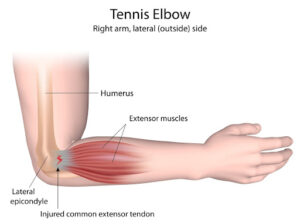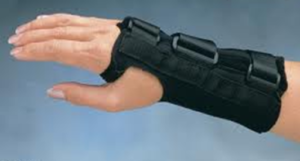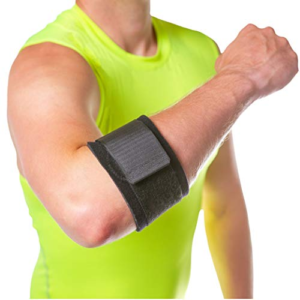Are you tired of the persistent aches and limitations caused by tennis elbow? Whether you are a writer, a chef, a DIY enthusiast, or a computer whiz, the discomfort of tennis elbow can strike unexpectedly, impeding your daily activities and leaving you grasping for relief.
But fear not! What if we told you that there is a way to proactively safeguard your elbows and prevent tennis elbow from taking hold?
In this article, we will delve into the world of injury prevention, equipping you with a lineup of exercises and strategies to keep your tennis elbow at bay. So, let’s learn about how to protect your elbows, regain your freedom of movement, and embrace a pain-free lifestyle.
What Is Tennis Elbow?
Tennis elbow – despite its misleading name – is not just reserved for tennis players. This common condition, medically known as lateral epicondylitis, is a tendon injury that occurs on the outer side of the elbow.
It is often caused by repetitive arm movements or gripping activities, such as typing, gardening, or weightlifting. The repetitive stress placed on the tendons can lead to inflammation, pain, and limited range of motion.

Individuals affected by this condition often experience pain and tenderness on the outer part of the elbow, which can radiate down the forearm. Activities like shaking hands or gripping objects can exacerbate the discomfort.
To confirm the diagnosis, a healthcare professional may perform a physical examination, assess medical history, and potentially order imaging tests.
Risk Factors & Common Causes Of Tennis Elbow
Tennis elbow often finds its roots in repetitive gripping and wrist extension activities. The repetitive motion involved in hitting a golf ball, or even using a hammer, for example, can strain the tendons in the forearm, leading to microscopic tears and subsequent inflammation.
While anyone can develop tennis elbow, certain factors increase the likelihood of falling victim to this condition. Age plays a role, as individuals between 30 and 50 are more prone to developing tennis elbow due to the natural degeneration of tendons and muscles over time.
Additionally, inadequate warm-up exercises and improper technique can place undue stress on the tendons, making them more susceptible to injury. Sudden increases in training intensity or duration without allowing the body to adapt can further raise the risk. If you have previously experienced tennis elbow or have weak forearm muscles, you may also be at a higher risk.
Strategies For Preventing Tennis Elbow
When it comes to any activity involving repetitive arm motions, preventing tennis elbow becomes paramount. To keep this notorious injury at bay, it’s crucial to employ smart strategies and techniques that safeguard your arm’s health and performance.
Proper Equipment & Techniques
Proper equipment and techniques play a vital role in preventing tennis elbow during various activities. It is crucial to choose ergonomic tools and devices that align with your body mechanics. Additionally, adopt proper gripping techniques, evenly distribute the workload, and take regular breaks to prevent overextension.

Remember, injury prevention is not limited to sports but should be a priority in your everyday activities. Consider using braces or supports to provide additional stability and protect your vulnerable tendons. Prioritise your well-being and implement these strategies to keep tennis elbow at bay.

Rest & Form
Rest and proper form are powerful tools in the battle against tennis elbow. Allow your muscles and tendons sufficient time to recover after repetitive arm movements. When engaging in activities, maintain correct posture, avoid excessive force, and listen to your body’s warning signs. A little rest and good form can go a long way in keeping tennis elbow at bay.
Stretching & Strength Training
Regular stretching and strength training play a vital role in preventing tennis elbow. Prioritise exercises that target your forearm muscles and promote flexibility, such as wrist flexor and extensor stretches. Incorporate strength training to build resilience in your wrists and forearms, focusing on exercises like wrist curls and reverse curls. However, be cautious and avoid exercises that exacerbate symptoms if you already have tennis elbow.
Key Exercises For Tennis Elbow Prevention
Forearm Extensor Stretch: Gently extend your arm in front of you with your palm facing down. Use your other hand to pull your fingers backward until you feel a stretch in your forearm. Hold for 15-30 seconds and repeat on both sides.
Wrist Flexor Strengthening: Grab a lightweight dumbbell or a resistance band and rest your forearm on a table with your palm facing down. Slowly curl your wrist upward, then lower it back down. Aim for 2-3 sets of 10-15 repetitions.
Pronation and Supination Exercises: Hold a small weight or a hammer handle with your elbow bent at 90 degrees. Rotate your forearm, moving your palm up and down. Perform 2-3 sets of 10-15 repetitions on each side.
Eccentric Wrist Extension: With a light dumbbell or a resistance band, position your forearm on a table with your palm facing down. Slowly lower the weight towards the floor, using your unaffected hand to lift it back up. Repeat for 2-3 sets of 10-15 repetitions.

Seek Professional Help Today!
When it comes to preventing tennis elbow, a proactive approach is essential. However, there are instances where seeking professional help becomes crucial. If you experience persistent pain, swelling, or limited range of motion in your elbow, it’s time to consult a health professional. These signs and symptoms may indicate a more severe condition requiring specialised care.
In such cases, reaching out to Dr Stuart Kirkham at the Sydney Orthopaedic Surgeon Clinic can provide you with expert guidance and assistance. Dr Stuart Kirkham, renowned for his expertise in tennis elbow, can offer tailored treatment plans, rehabilitation strategies, and advice on how to prevent tennis elbow in the future. Take control of your health today.


